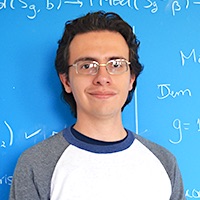Combinatorial rigidity of complexes of curves and multicurves
Jésus Hernández Hernández
I2M, Aix-Marseille Université
https://sites.google.com/site/jhdezhdez/
Date(s) : 13/05/2016 iCal
11h00 - 13h00
Dans le cadre de la Journée de conférences organisée par Hamish Short autour de la thèse de Jesús Hernández Hernández.
http://www.theses.fr/2017LEMA1018
Combinatorial rigidity of complexes of curves and multicurves
Suppose S = Sg,n is an orientable connected surface of finite topological type, with genus g ≥ 3 and n ≥ 0 punctures. In the first two chapters we describe the principal set of a surface, and prove that through iterated rigid expansions we can create an increasing sequence of finite sets whose union in the curve complex of the surface C(S). In the third chapter we introduced Aramayona and Leininger’s finite rigid set X(S) and use it to prove that the increasing sequence of the previous two chapters becomes an increasing sequence of finite rigid sets after, at most, the fifth iterated rigid expansion. We use this to prove that given S1 = Sg1,n1 and S2 = Sg2,n2 surfaces such that k(S1) ≥ k(S2) and g1 ≥ 3, any edge-preserving map from C(S1) to C(S2) is induced by a homeomorphism from S1 to S2. This is later used to prove a similar statement using homomorphisms from certain subgroups of Mod*(S1) to Mod*(S2). In the fourth chapter we use the previous results to prove that the only way to obtain an edge-preserving and alternating map from the Hatcher-Thurston graph of S1 = Sg,0, HT(S1), to the Hatcher-Thurston graph of S2 = Sg,n, HT(S2), is using a homeomorphism of S1 and then make n punctures to the surface to obtain S2. As a consequence, any edge-preserving and alternating self-map of HT(S) as well as any automorphism is induced by a homeomorphism. In the fifth chapter we prove that any superinjective map from the nonseparating and outer curve graph of S1, NO(S1), to that of S2, NO(S2), is induced by a homeomorphism assuming the same conditions as in the previous chapters. Finally, in the conclusions we discuss the meaning of these results and possible ways to expand them.
Sous la direction de Hamish Short et de Javier Aramayona.
Soutenue le 13-05-2016
à Aix-Marseille , dans le cadre de Ecole Doctorale Mathématiques et Informatique de Marseille (Marseille) .
Le président du jury était Pascal Hubert.
Les rapporteurs étaient Mustapha Korkmaz, Gregory McShane.
Catégories





